10 MIN READ
I’m ready to plant, but should I?
February 16, 2023
To compare yearly research data, click on a tab.
TRIAL OBJECTIVE
- Planting date is one of several important parameters for growers to consider when producing corn. Response to seeding rate is also a very important factor to evaluate on a product specific basis.
- Planting date and seeding rate can only be established at planting time.
- The goal of this study was to characterize the yield potential of different corn products with various planting date and seeding rate combinations.
- Proper planning is essential for optimal corn production. For this reason, the results of this study can help establish corn yield potential for the region.
RESEARCH SITE DETAILS

- All agronomic inputs (herbicides, fungicides, and insect control) were per local standards.
- Fertility included 275 lbs N/acre applied as soil applied liquid 28-0-0-5.
- Table 1 includes corn products plants and the relative maturity and traits of those corn products.
- There were three different planting dates for this trial:
- March 28
- April 11
- April 27
- Two seeding rates were included in this trial:
- 32000 seeds/acre
- 38000 seeds/acre
- This trial was a single replicate trial with 0.08 acres/plot.
- The trial was machine harvested and yield data was corrected to 15.5% moisture content.
Table 1. DEKALB® corn product, relative maturity, and value-added trait of products planted.

- This trial complements a planting date study from the 2021 season. Differences include:
- The 2021 trial included an early planting date with suboptimal (cool, wet, rainy) conditions in the seven-day forecast.
- In 2022, the early planting date (March 28) was planted into almost ideal conditions. Therefore, the results appear to conflict with the results from 2021. However, they represent the reality of corn planting decisions that growers need to make each year.
UNDERSTANDING THE RESULTS
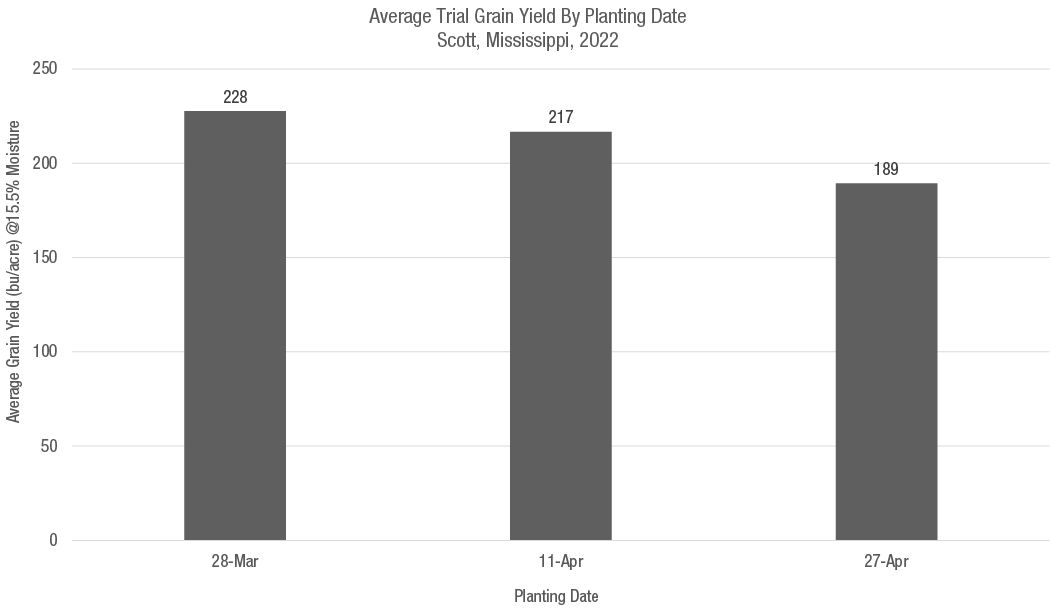
Effect of Planting Date
- The overall response to planting date varied. The March 28 planting date yielded 11 bu/acre more than the April 11 date, and 39 bu/acre greater than the April 27 planting date, when averaged across all products and seeding rates (Figure 1).
- At $6.10 per bushel, this resulted in an increase in net returns of $67.10/acre and $237.90/acre for planting on March 28, compared to the April 11 and April 27 planting dates, respectively.
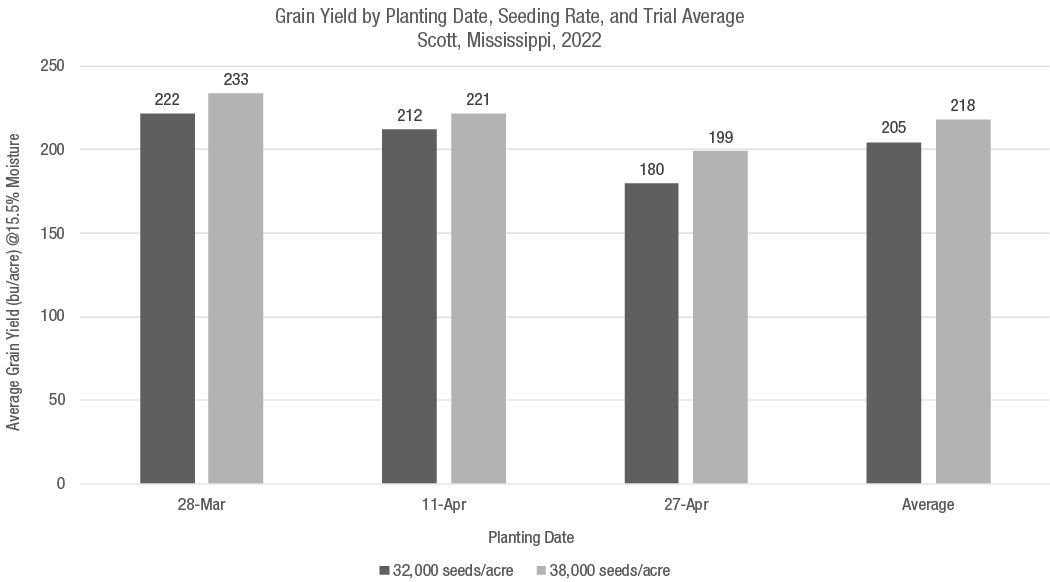
Effect of Seeding Rate
- The response to seeding rate was similar across planting dates and products included in this trial (Figure 2). The average emergence across all treatments was approximately 92%.
- The average response to increasing seeding rate from 32,000 to 38,000 seeds per acre across all corn products and planting dates, was 13 bu/acre. This resulted in an increase in gross returns of $79.30, and a net return of $49.30 per acre (using a cost of $5.00 per 1000 kernels of seed).
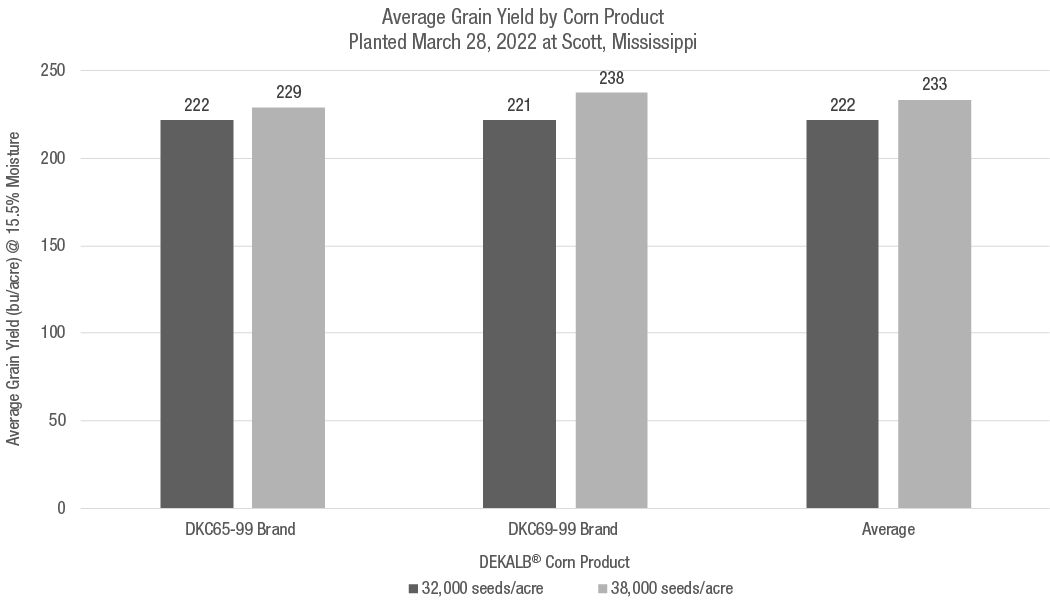
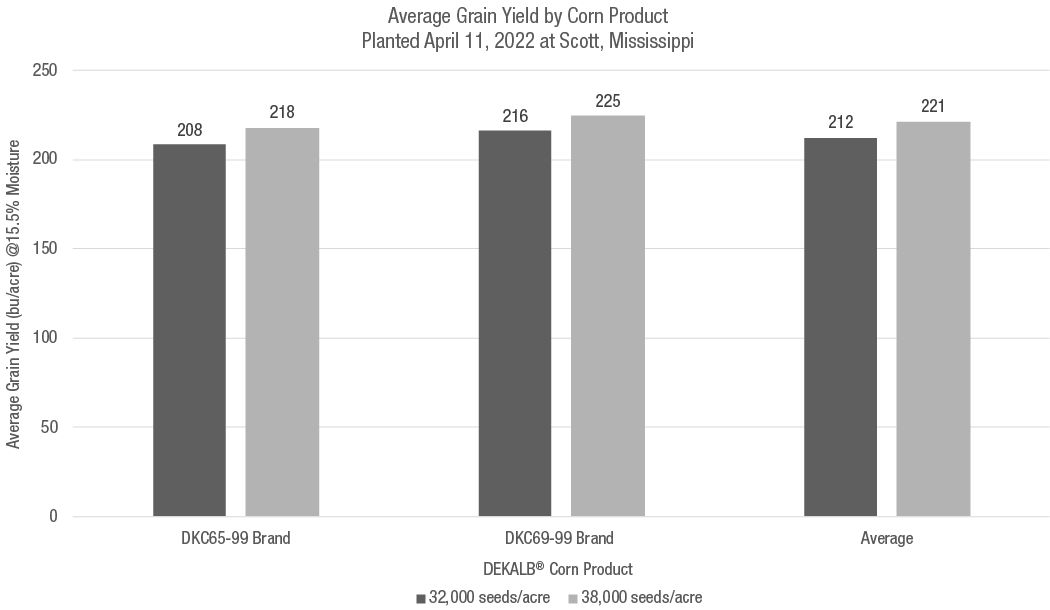
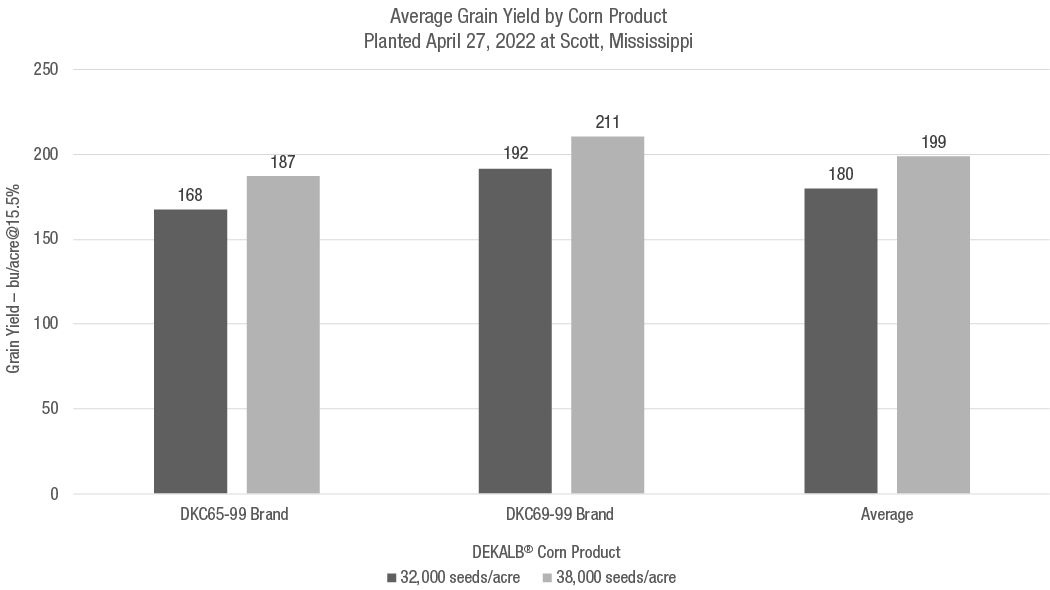
- Across the tested corn products, the response to planting date and seeding rate was similar (Figures 3, 4 and 5).
KEY LEARNINGS
- Early planting into good conditions (warm soils with a good seven-day forecast) was found to have a positive impact on corn yield potential.
- Positive responses to increasing seeding rate were measured in every case in this trial.
- Each corn product selected for planting should be evaluated for its response to seeding rate.
- Growers should consider seven-day weather forecasts and corn product responses prior to making the decision to plant.
- Please see your local Bayer/DEKALB® representative for more information.
1214_170059